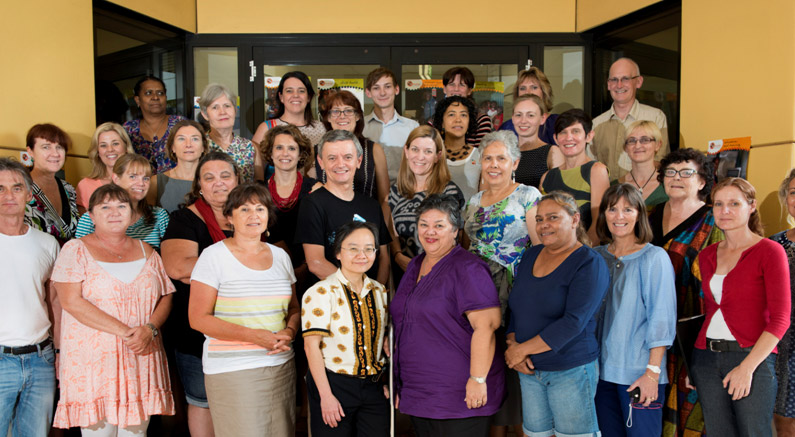
The NHMRC CRE in Bronchiectasis stems from our previous CRE in Respiratory Health of Aboriginal and Torres Strait Islander Children. Abbreviated to AusBREATHE (Australian Bronchiectasis Centre of Research Excellence esp. for Aboriginal and Torres Strait Islander Children), it includes experts from around Australia and the world. The CRE is led by Professor Anne Chang who is a leading researcher with international recognition in cough, bronchiectasis and evidence based medicine related to paediatric respiratory medicine. There are 10 chief investigators and a further 10 associate investigators covering a broad range of relevant expertise. The team includes clinicians, laboratory scientists, health service delivery experts, health economists and community First Nations leaders.
Respiratory conditions are the most common reason why First Nations people see a doctor and the second most common reason for hospitalisation. A lot of chronic respiratory disease e.g. bronchiectasis seen in adults starts in childhood. Prompt diagnosis (through early detection) and optimal treatment are crucial in reducing the global disease burden, with prevention being the ultimate goal. Early bronchiectasis in children is reversible if treated promptly, thereby avoiding the later progression of disease and lung function decline.
Vision and Aims
The overarching vision of the CRE is to reduce the burden of bronchiectasis through clinical research (informed by novel technologies and strategies) to both prevent and better manage bronchiectasis. This will also improve the respiratory health of children, especially for Aboriginal and Torres Strait Islander Children with a high risk of developing bronchiectasis.
The specific aims are to:
- generate new knowledge that leads to improved health outcomes
- transfer research outcomes into health policy and/or practice
- develop the health and medical research workforce
- facilitate collaboration
- translate research findings
Our Logo

Our emblem is a reproduction of a painting by talented First Nations artist and former Menzies employee, Chidanpee. This is Chidanpee's description of how the painting represents the lungs:
When the earth was made, so were the first trees. They cleaned the air through their branches and leaves. The same is reflected in us with our lungs; they have branches like trees breathing in the air and cleaning our body and provide much needed oxygen.
The butterflies represent a delicate balance; if something happens to the air, the butterflies will die. That's why we must look after our air, like we have to look after our lungs because they keep us alive. The red dots represent alveoli that are at the end of the branches.
Logo designed by Chidanpee.
Table Runner - A meeting place for different mobs

The CRE is fortunate to have been been provided with a table runner made by our own researcher Lesley Versteegh using materials she sourced from many different groups. It is used for First Nations' and other CRE meetings where it brings different mobs to the same meeting place.
Centre for Research Excellence program
The Centre for Research Excellence (CRE) program is a competitive grant scheme funded by the National Health and Medical Research Council (NHMRC).
The specific objectives of the scheme are to:
- Support the conduct and development of innovative, high quality, collaborative research;
- Promote effective translation of research into health policy and/or practice;
- Foster and build capacity in the health and medical research workforce; and
- Provide opportunities to expand and improve collaborations between research teams.
Menzies School of Health Research
AusBREATHE is based at the Menzies School of Health Research in Darwin. Menzies is Australia’s only medical research institute dedicated to improving First Nations health and wellbeing. We have a 30- year history of scientific discovery and public health achievement. We work at the frontline and collaborate broadly, partnering with over 60 First Nations communities across northern Australia to create resources, grow local skills, and find enduring solutions to problems that matter.
